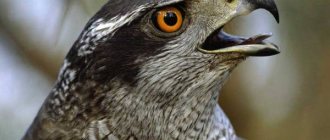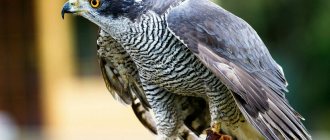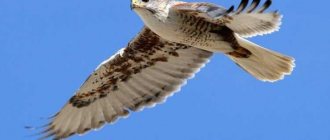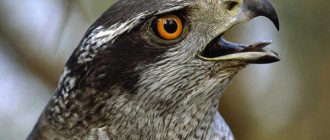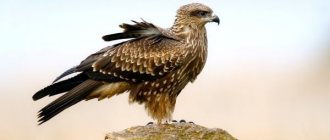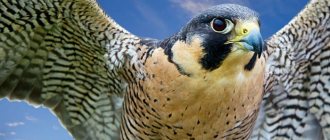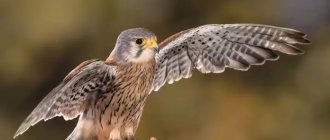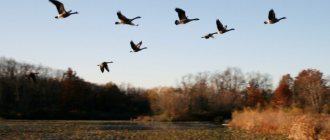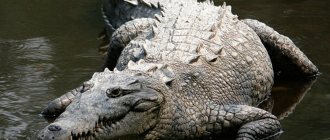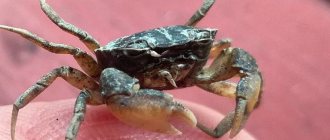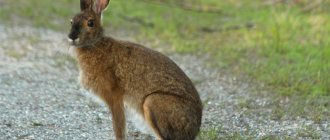If not in the wild, then in a zoo or in a book, on a screen or during a theatrical performance, people have observed such majestic birds as the falcon and the hawk. Not many can immediately explain who it is and what the main differences between them are. In order to close the gap in knowledge or simply broaden your horizons, it is recommended to first define each type and then make a comparison along a number of basic parameters.
What is the difference between a golden eagle and an eagle?
Bald eagles are dark brown with a white head and tail. On the other hand, golden eagles are dark brown with lighter brown spots and feathers on the back of the head and wings. Bald eagles live primarily near large bodies of water, while golden eagles can be found in deserts, forests, mountains, and many other places.
Interesting materials:
What better meaning could there be? How to explain to a child what Christ is risen means? How is an argument indicated in algebra? How are adverbial and participial phrases indicated? What is a delicate wash on a washing machine? What is the designation for length A or B? How is phosphorus designated in the periodic table? What is phosphorus? What is geometric progression? What is a grill in an oven?
Definition
A falcon is a bird that is represented by a numerous genus. The falcon belongs to the falcon family. The scientific name of this bird is Falco. It comes from the Latin word meaning sickle. This name refers to the unusual shape of the bird during flight, when it spreads its wings.
As for hawks, they belong to the accipitridae family, forming a subfamily. This subfamily contains several genera. The most extensive of them is considered to be the genus of the so-called true hawks. The following species of hawks belong to this genus: goshawks and sparrowhawks. These birds are widespread in Russia.
Now it’s worth understanding in more detail how a falcon differs from a hawk.
Keeping a hawk in captivity
People keep hawks as an exotic pet, or less often for sport hunting for game birds.
Proper keeping of a hawk at home means giving the bird a whole room with enough space to fly, or a spacious enclosure. In a private house, the second option is preferable. The aviary should be placed in a quiet place away from poultry and livestock. The structure can be made of a wooden frame, covered on three sides with burlap or canvas, and on the fourth with a lattice of slats 2 cm thick. The roof should be made of metal fine mesh, below which a nylon fishing net is stretched. This is necessary so that the hawk does not injure itself by hitting the ceiling in fright.
If the hawk lives on the balcony, it is necessary to cover its walls with burlap, remove the glass and replace it with wooden panels made of slats.
Hawks in captivity need to be fed natural food. Raw meat alone will not provide the bird with the necessary nutrients. She must eat the whole carcass so that wool, feathers, and bones get into the stomach. To do this, you will have to buy mice or hamsters for the bird at a pet store or from breeders. Chicks can be fed with minced meat.
Once in new conditions, hawks experience stress and may not touch food for a long time. Then you need to force feed them, bringing food on a stick close to the beak. You also need to make sure that the bird swallows the food. Gradually, the hawks will get used to humans and will eat on their own. Hawks drink little, but love to swim. Therefore, you need to give them a deep container for bathing and remove it after bathing.
HELPFUL INFORMATION. You should not feed your pet hawk large poultry or rabbits, as their meat contains too much fat.
In captivity, hawks practically do not reproduce naturally. Typically, a grown-up chick perceives its owner as a partner and does not mate with its own kind. Sometimes the female can behave aggressively towards the male and even kill him. More often in captivity, offspring are obtained through artificial insemination, which is quite troublesome and requires considerable investment in equipment.
Domesticated hawk on a bench
Sparrowhawk
Sparrowhawk (Accipiter nisus). The sparrowhawk is similar to the goshawk, but smaller in size - approximately the size of a pigeon (body weight of males 120-145 g, females 231-300 g), with short wings and an elongated tail. This small hawk is more cautious and silent than the goshawk; only at the nest can you sometimes hear its ringing “ki-ki-ki.” "
The sparrowhawk nests in Moscow and the Moscow region; it is more common than other birds during migration and spends the winter in small numbers. The breeding season for birds nesting in close proximity to the city is more extended.
Hawk and Falcon 2022
Hawk vs Falcon
The falcon is a bird of prey belonging to the genus falco. In the genus falco there are various species of these birds of prey. They are characterized by their long wings and powerful beaks, which are adapted to the way the birds hunt for prey by vigorously scratching and then tearing the flesh of the captured animal. Falcons, when fully mature, typically fly at very high speeds and change directions easily because their wings are tapered and thin. For young falcons, their longer flight feathers are typical of any other flying bird, but they allow the young birds to easily learn superior hunting skills that will allow them to become familiar with effective hunting skills when they grow up. Falcons are known for their super-fast flight speeds, and the peregrine falcon is recorded as the fastest flying bird, as well as the fastest moving creature on Earth with a diving speed of 322 km/h. other famous falcons are Lanner, Merlin, Fortress and Hobby, which are small with long and narrow wings. Like many birds of prey, falcons have a superior sense of vision, more than twice that of humans.
Types of hawks
There are about 70 species in the genus Hawk; the names of these birds reflect their characteristic features.
The goshawk is the largest representative of the genus. Body length up to 69 cm. The female weighs up to 1.6 kg, the male, like all hawks, is smaller. Distribution area: .
The African hawk is twice as small. Its back is gray, and the wax is not yellow, but greenish-gray. Lives in Africa, except northern and western.
The sparrowhawk is common in Europe, Russia and southwest China. Much smaller than the goshawk. Therefore, it is also called the small hawk. They nest in small colonies.
It is interesting that goshawks do not allow their relatives into their hunting territory, but sparrowhawks are calmly allowed to nest nearby.
The light hawk lives in Australia and Tasmania. The species is divided into two subspecies - gray and white. Quite large, wingspan up to a meter.
The dark song hawk is a resident of the forests and savannas of South Africa. They make rather melodic sounds, which is why they got their name.
The Crested Hawk is a medium-sized species that ranges from India in the west to Indonesia in the east. Typical in appearance, but has a crest.
European Tyuvik is a resident of Southern Europe, Crimea, and the Caucasus. Winters in Egypt, Turkey and Arabia. Small in size, feeds on birds and frogs.
The Red Hawk is a rare bird of prey in Australia. Large, slightly smaller in size than a goshawk, reddish in color with streaks.
The hawk is an amazingly beautiful and intelligent bird. Easily tamed. Game hunters are not very fond of them, because where hawks live, there is no one to hunt. Farmers and pigeon keepers don't like it either - they steal chickens and pigeons. Until the middle of the last century, they were shot, until they realized that hawks are needed in nature, regulating the number of rodents.
In nature there is nothing superfluous at all. And such a handsome man - even more so.
Difference in hunting of birds of prey
Many hunters do not notice the differences between a falcon, a hawk and a kite. However, the difference can be seen in their hunting habits. To do this, you just need to watch how birds of prey catch prey. The falcons are not hiding, they are tracking her. When hunting, they fly quite high. When the bird notices the prey, it quickly rushes towards it with half-folded wings. During this time, the prey usually floats in the air.
Hawks, looking for food for themselves, soar closer to the ground. They attack prey from ambush. After this, the predator chases after her and overtakes her on the surface of the earth or not high from her in the air.
Knowing these features, you can easily distinguish a falcon from a hawk.
Bird comparison
Outwardly, it may seem that the birds described above are very similar to each other. However, there are differences between a falcon and a hawk, which are as follows:
- Beak. These birds can be recognized by the outline of the upper area of the beak. The falcon differs from the hawk in that it has a protrusion similar to a tooth, not reaching the curved tip of the beak. The hawk has a straight beak, which has a characteristic curve, like most birds of prey.
- Eyes. Representatives of falcons have very dark eyes, in most cases black. The iris of the eye almost merges with the pupil. The hawk's eyes are yellow or red with a pronounced black pupil in the center.
- Wings. If you compare the shape of the wings of a hawk and a falcon during flight, you can see that the falcon’s wings are slightly angular and have pointed ends. The hawk's wings are more rounded. They themselves are wide, which can also be said about the bird’s tail.
- Flight. The falcon, being above the surface of the earth, flaps its wings very often. These movements alternate with planning. Hawks prefer to spend more time hovering in the air.
common tern
Common Tern (Sterna hirundo), The Common Tern is similar to a gull, but of a lighter build, with very long and narrow wings and a forked, deeply cut tail, smaller than the black-headed gull (body weight 120 g). The general color of the dorsal side of the common tern is bluish-gray, the ventral side is light gray. From a distance the bird appears white, a black “cap” is clearly visible on its head, and its beak is red with a black tip.
In the near Moscow region, common terns are found much less frequently than black-headed and glaucous gulls, both during migration and during the nesting season.
Where do hawks live?
Hawks live in almost all corners of the Earth: from the forest-tundra to the jungles of Eurasia, the Americas, Africa, and Australia.
They prefer to settle on the edges of forests, although there are species that have adapted to open landscapes.
Hawks living in the north migrate to the south, and in temperate latitudes they lead a sedentary lifestyle.
Falcon hobby
Hobbyfish (Falco subbuteo). The falcon, distinguished by long and narrow wings, is the size of a dove (body weight for males is 200-203 g, for females 247 g), almost black above, mottled below, with a white throat and black “whiskers”.
In Moscow and its environs, over the past 10-15 years, the Hobby has become a common bird of prey. This falcon now nests in all large urban forest parks of Moscow, in many cemeteries; it has been found nesting even in the central part of the city near the Garden Ring.
conclusions
By making a comparison, we can draw conclusions about what these predators are. The falcon will have a powerful beak, on which a characteristic tooth is located. The hawk has an equally powerful beak, but with an even contour. The eyes of a falcon are dark in most cases, but those of hawks are yellow or orange. The falcon's wings are pointed and angular. The hawk shows wide and rounded wings (and the same tail). The flight of the Sokolin representative is unusual - it is characterized by frequent flapping of its wings. The falcon spends a lot of time hovering above the ground. Hunting methods also differ between these two predators. The falcon chooses to hunt from above, the hawk - from cover, followed by pursuit.
Birds and their taxonomy
Today there are about ten thousand different species of birds in the world. They live on all continents of the Earth, including Antarctica. In this article we will look at the general taxonomy of this class of animals, and also briefly introduce you to the most famous families and genera of birds of prey.
The class of birds (in Latin Aves) are warm-blooded, egg-laying vertebrates that arose in the Jurassic period (about 150 million years ago). It is possible that their direct ancestors were theropod dinosaurs. They were promoted to the rank of an independent class due to the presence of wings and the ability to fly. Although there are flightless birds (the most striking examples are penguins, ostriches and kiwis). Modern science counts from 9,800 to 10,050 species of birds, depending on one taxonomic classification or another.
Biological systematics (or taxonomy) is a branch of biology that deals with the development of principles for the classification of living organisms and studies intergroup and interspecific relationships in animals. The modern and generally accepted system of taxonomic categories in science was formalized at the beginning of the twentieth century. This is, in particular, what the taxonomy of the “bird” class looks like:
Thus, any feathered creature must consistently belong to all of the above categories. Next we will talk in more detail about birds of prey. What genera and families do they belong to?
Goshawk
Goshawk (Accipiter gentilis). A bird of prey of the hawk family, 2-2.5 times larger than the hooded crow (body weight of males 570-910 g, females 988-1500 g), the female is much larger than the male. The color of an adult bird is gray above, white below with dark narrow transverse stripes.
The tail is longer than that of other birds of prey and has wide dark stripes. Eyes orange or yellow. The goshawk's voice (a loud, sharp “kya-kya-kya.”) can usually be heard in the immediate vicinity of the nest.
Reproduction and care of offspring
Hawks are characterized by monogamy; they mate for life. They become sexually mature at the age of 1 year. Birds prefer to nest constantly in the same territory. If the old nest is preserved, the birds use it again. In other cases, hawks use other people's nests or build new ones. Construction of the nest usually begins 1.5 months before mating. Birds love to build nests in mixed, deciduous and coniferous forests on the treetops. Future parents use branches, leaves, and grass as building materials. Song hawks also use water mud.
Hawks produce one offspring per year. The female lays eggs in May for several days. A clutch usually contains 2–5 eggs of different colors. Some eggs may be brown, others blue-gray or light green. If a clutch dies, sparrowhawks may lay a new one. The female always does the incubation; the male feeds her during this period. The chicks usually hatch after 32–38 days. For the first 2–3 weeks after the birth of the offspring, the female remains in the nest, and the male brings prey for the family, which he gives to his partner. The female tears small pieces from the carcasses and feeds the babies. When the chicks grow up, both parents search for food. After the birth of the offspring, the female hawk becomes more aggressive. She may be the first to rush at an animal or person passing near the nest. The chicks leave the nest approximately 40 days after birth. Parents feed their offspring for about another 1.5 months.
INTERESTING FACT. It has been observed that adult pairs of hawks have 2–3 nests in their territory. In different years they choose one of them depending on external factors and weather conditions.
There were cases where hawks raised the nest higher and higher every year. The reason was outside interference. Ornithologists also claim that the number of eggs in clutches is gradually decreasing - this is due to the deterioration of the environmental situation. Egg viability has also decreased in recent decades.
We invite you to watch a video about how a sparrowhawk takes care of its chicks.
